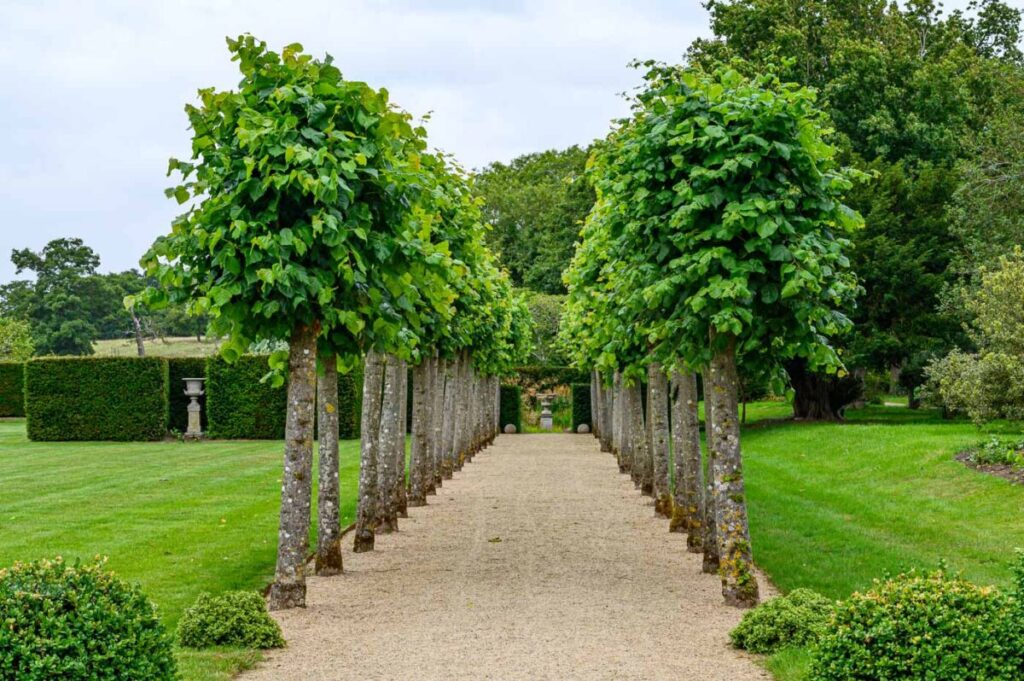Garden Designer as Magician?

Before we start I do want to make clear that garden designers are not magicians! We can’t pull a rabbit out of a hat or find a fortune for you behind your ear but that said garden designers do have a few tricks up their sleeves that, like magicians, depend on the powers and skills of misdirection, and dare I say it, manipulation.
The garden designer’s motivation for using such skills is fairly benign: how can we hide this ugly corner, for instance, or make the garden feel bigger, smaller, longer, wider, shorter, more intimate or more expansive; I’m sure you get the picture! We often want things we haven’t got or struggle to deal effectively with things we have and gardens are no different – thank goodness then for some of the tried and tested illusionary tools in the arsenal of a garden designer…
- Colour – I’ve mentioned in previous articles the qualities of colour that can help make a border feel larger or smaller but the effect works for gardens as a whole too. Place bold colours at the front of your garden (nearer to the viewer) to make the whole area feel larger, with neutral and darker tones behind. The boldness of the colour catches the viewer’s attention first, making what’s behind it appear to recede and therefore the viewer’s perception of the whole space is that it’s larger than it really is.
- Texture and scale can work in a similar way to colour; the misdirection technique of catching the viewer’s eye makes them subconsciously ‘relegate’ what’s behind the eye catcher as being further away. Position a big, eye catching piece of sculpture nearer to the viewer and what’s (a fair distance, ie. not immediately) behind it will appear to recede, even if what’s behind it is physically bigger than the sculpture in reality. Place plants with smaller, more uniform foliage behind eye catching, showy-textured plants and not only will the distraction technique work – as with colour – but the manipulation one will too as we play with the viewer’s perception of perspective. The loss of detail in the more distant plants creates the illusion of greater depth and therefore distance. The result? The space looks bigger than it really is!
- Perspective illusions can be created in other ways too. Long straight lines for instance trick the eye into thinking that a space is larger. The further the lines are away from the viewer the closer they appear to become to each other, appearing to be converging and therefore carrying with it a sense of ‘distance’. Knowing that the viewer will perceive the lines in this way means that you can actually manipulate them in order to intensify the effect. For instance physically converging the edges of a straight pathway slightly so that at the viewpoint spot the edges are actually wider than they are at the distant spot would work, or trimming boundary hedges so that they are slightly taller at the view (near) point than they are at the far point. Linear perspectives like this, of course, only work when viewed at a particular ‘spot’ but they are incredibly effective, especially when combined with a scaled down focal point at the convergence point (like in our main image). Because we know that things appear smaller when they’re further away from us, we’re tricked by our own experience and expectation when viewing the focal point – because it’s smaller it ‘must’ be further away and thus our perception of the distance is manipulated and we perceive it as being much further than it actually is.
I’ve barely scratched the surface of this subject, it’s as expansive as the results appear magical, but hopefully it will give you an insight into some of the ways garden designers achieve some of the effects they do.




